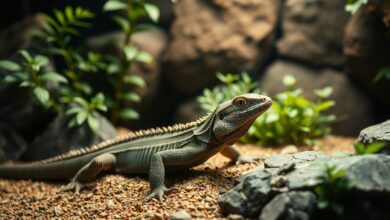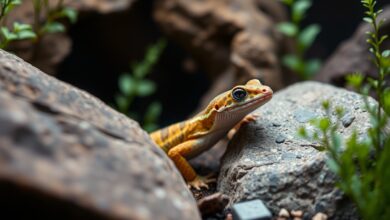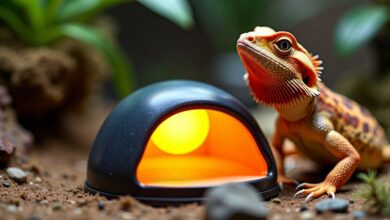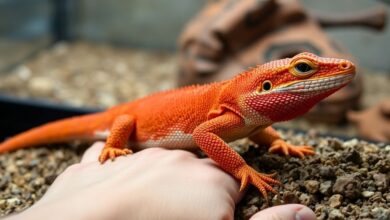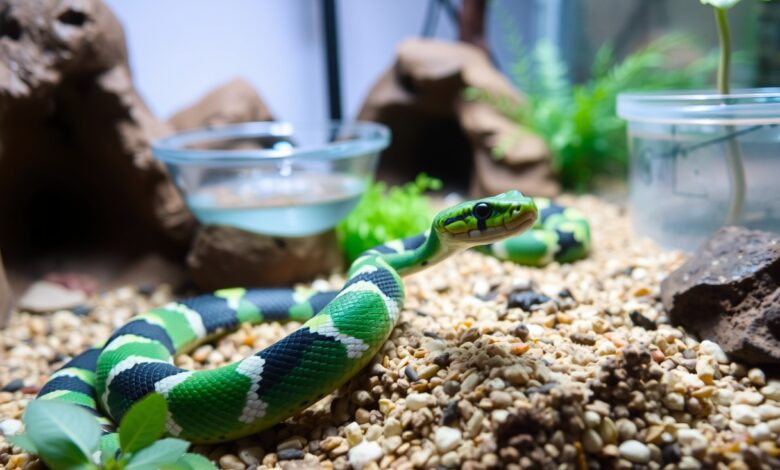
Kingsnake care is crucial for any new snake owner, especially when it comes to the Brooks Kingsnake. This breed is known for its gentle temperament and striking appearance, making it an ideal choice for beginners. You’ll need to focus on creating the right habitat conditions, offering a balanced diet, and ensuring proper health monitoring. By following this comprehensive care guide, you can provide the best environment for your Brooks Kingsnake, ensuring a happy and healthy life for your new reptilian companion.
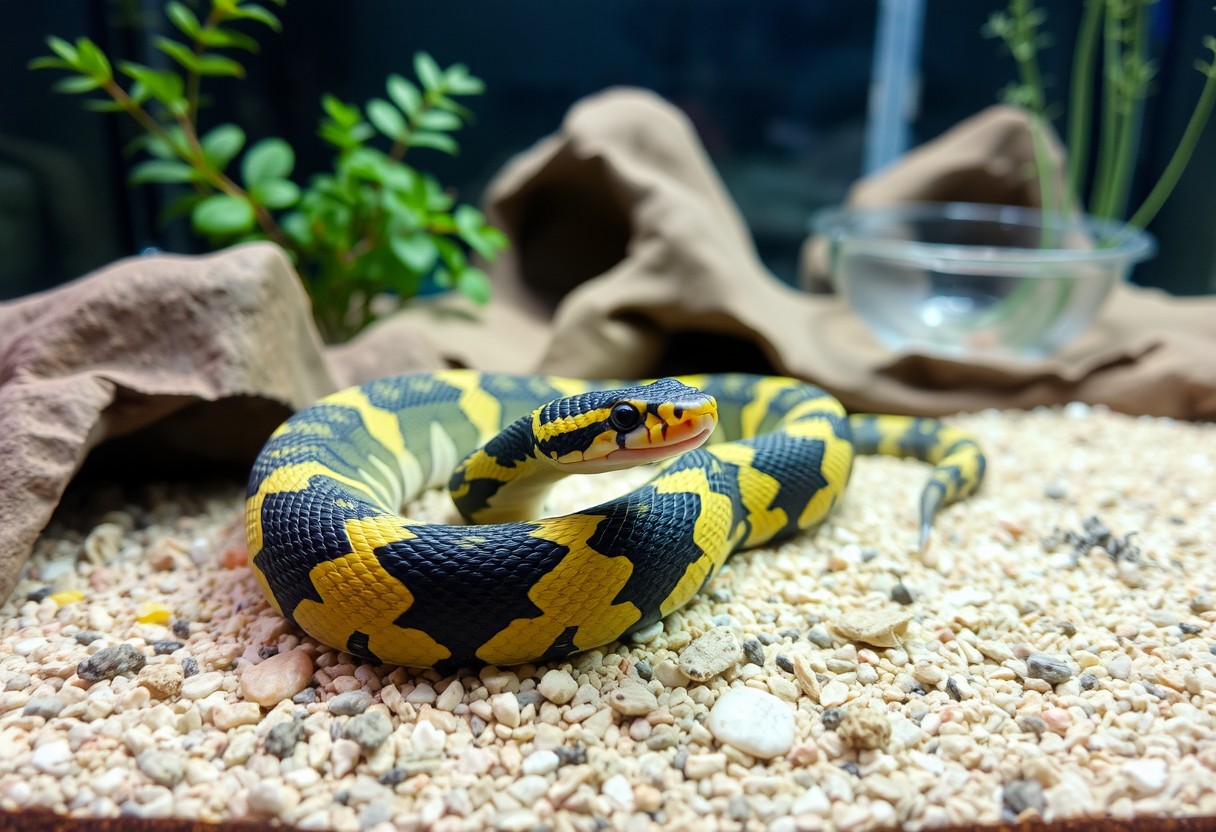
Key Takeaways:
- Habitat Requirements: Provide a secure and spacious enclosure with proper heating and humidity levels to ensure the health of your Brooks Kingsnake.
- Diet Essentials: Offer a varied diet primarily consisting of rodents, which can be served frozen and thawed for convenience and safety.
- Handling Guidelines: Regular, gentle handling can help your snake feel comfortable, but it’s important to approach it calmly and avoid stress during the initial acclimation period.
Types of Brooks Kingsnakes
Your understanding of the Brooks Kingsnake can be deepened by exploring the various types available. Each type offers distinct visual features and characteristics. Here is a breakdown of the common types:
| Type | Description |
|---|---|
| Western Brooks Kingsnake | Vibrant with alternating bands of color. |
| Eastern Brooks Kingsnake | Sleek body with darker patterns. |
| Albino Brooks Kingsnake | Lacks pigment, showcasing a bright appearance. |
| Hypo Brooks Kingsnake | Reduced pigmentation resulting in lighter tones. |
| Lavender Brooks Kingsnake | Soft lavender hues give a unique look. |
Thou can choose any type that fits your preferences, assuring an incredible addition to your collection.
Color Variations
While the Brooks Kingsnake is known for its stunning colors, these creatures can exhibit numerous color variations. From striking black and white patterns to vivid reds and yellows, each individual can reflect a unique blend of shades. The variety in color not only enhances their allure but also adds fascination to your reptilian care experience.
Size and Age Differences
An important factor in your care routine is understanding the size and age differences among Brooks Kingsnakes. These factors influence their habitat needs and feeding requirements, necessary for their thriving growth.
Variations in size can be observed, where adult Brooks Kingsnakes typically range from 2 to 5 feet long, depending on genetics and upbringing. With appropriate care, they can live around 15 years in captivity. Younger snakes, especially hatchlings, need specific care to ensure they reach maturity. A well-fed, adequately housed Brooks Kingsnake will exhibit healthy growth, showing the importance of tailored husbandry practices.

Care Tips for Beginners
While caring for a Brooks Kingsnake may seem daunting at first, following some simple guidelines can set you on the right path. Here are a few crucial tips:
- Provide a suitable habitat with proper heating and humidity.
- Ensure your snakes have hiding spots and climbing areas.
- Feed them a diet primarily consisting of appropriately sized rodents.
- Handle your snake gently to build trust over time.
Perceiving these fundamental aspects of care will enhance your relationship with your pet. For detailed information, refer to the Kingsnake Care Sheet.
Habitat Setup and Maintenance
Maintenance of your Brooks Kingsnake’s habitat is vital for its overall wellbeing. Ensure the enclosure is at least 20 gallons for adults, with a secure lid to prevent escapes. Utilize substrate such as aspen shavings or coconut fiber, and provide a temperature gradient, with a basking spot of 85-90°F and a cooler side at 70-75°F. Regularly clean the enclosure and replace soiled substrate to maintain a hygienic environment.
Feeding and Nutrition
Clearly, feeding your Brooks Kingsnake requires attention to its nutritional needs. They thrive on a diet of appropriately sized mice or rats, typically fed once every 1-2 weeks based on the snake’s size and age. Avoid overfeeding, as it can lead to obesity.
Care for your Brooks Kingsnake by monitoring its eating habits closely. Young snakes may require smaller meals more frequently, while adults are satisfied with larger meals less often. If your snake refuses food, assess factors like temperature, stress, or potential health issues. Additionally, keep an eye on any signs of obstructions or regurgitation, as these may indicate serious problems requiring veterinary attention. A consistent feeding schedule and proper food size will promote a healthy, thriving snake.
Step-by-Step Care Guide
After you’ve set up an appropriate habitat for your Brooks Kingsnake, it’s important to follow a systematic care routine. You can find helpful guidelines in the King Snake General Reptile Care Guide | Reptifiles. Below is a simple breakdown of your care duties:
| Daily Care | Weekly/Montly Maintenance |
|---|---|
| Check humidity and temperature levels. | Clean enclosure and refresh substrate. |
| Observe your snake for any signs of health issues. | Inspect and replace water dish as needed. |
| Feed at the right schedule. | Check for any shed skin remnants. |
Daily Care Routine
Now that you’re familiar with your snake’s habitat, you should focus on daily tasks. Make it a habit to check the humidity and temperature levels to ensure they’re within the optimal range for your Brooks Kingsnake. Observing your snake’s behavior will help you spot any health concerns early, while providing food regularly keeps it nourished and healthy.
Weekly and Monthly Maintenance
Assuming you have established your daily routine, you can shift your focus to weekly and monthly maintenance tasks. Regular cleaning and inspecting the habitat are important to maintain a safe and healthy environment for your snake. You should also replace the water regularly to keep it fresh and clean for hydration.
Care for your Brooks Kingsnake involves not only daily checks but also consistent weekly and monthly maintenance. Cleaning the enclosure and refreshing the substrate helps prevent disease and keeps the habitat welcoming. In addition, frequently inspecting for shed skin remnants reduces bacterial growth, ensuring a healthy living space for your snake. These practices significantly enhance your pet’s well-being, allowing it to thrive.
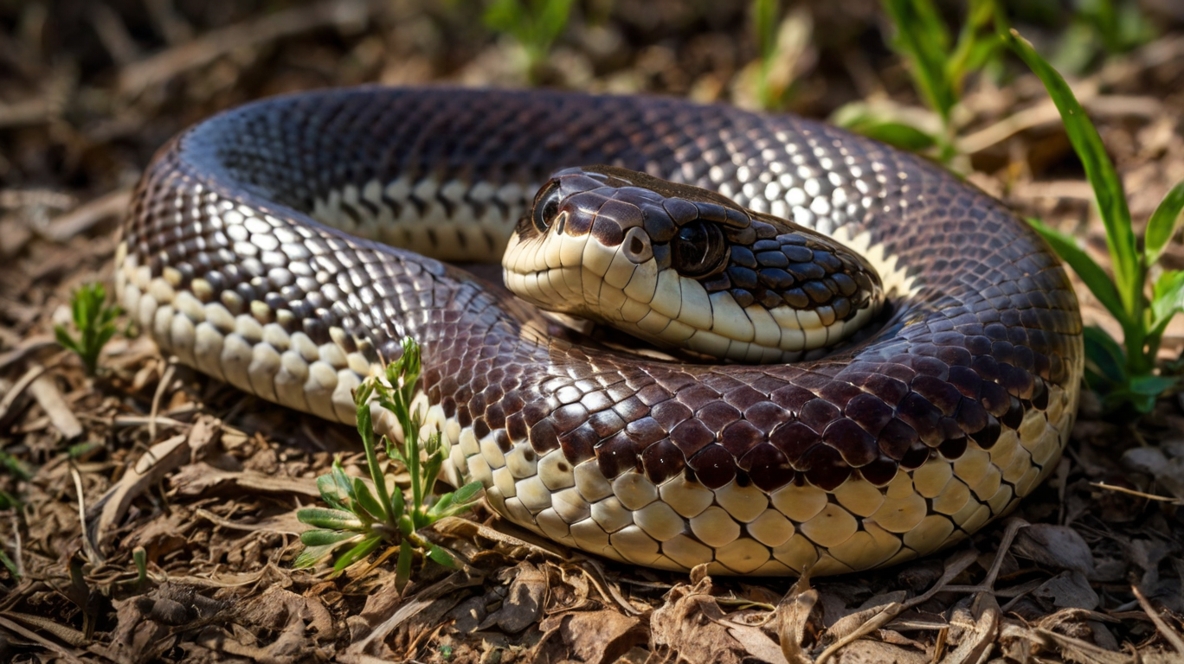
Factors to Consider Before Getting a Brooks Kingsnake
For new pet owners, understanding the responsibilities of keeping a Brooks Kingsnake is crucial. Before committing, assess the following:
- Your skill level in snake care
- Available budget for setup and maintenance
- Space for proper enclosure
- Long-term commitment of 10 to 20 years
- Potential for growth; they can reach 4 to 5 feet
The more informed you are, the better the experience will be for both you and your snake.
Space and Environment Needs
There’s no denying that Brooks Kingsnakes require a suitable space to thrive. An ideal enclosure should be at least 20 gallons, allowing them to move around freely. Ensure the environment includes hiding spots, branches for climbing, and proper heating elements to maintain a temperature gradient. A clean and enriching habitat is vital for their well-being, contributing to a healthy and happy pet.
Temperament and Handling
Clearly, one of the appealing traits of Brooks Kingsnakes is their temperament, making them suitable for both beginners and experienced owners. These snakes tend to be docile and can adapt well to handling over time.
For instance, while Brooks Kingsnakes are generally known for their calm demeanor, they can display a defensive posture if startled. With regular handling, they often become more tolerant and may enjoy being handled. It’s important to keep in mind that sudden movements can lead to stress, so be gentle and patient; the *positive* interactions will foster a bond between you and your snake.
Pros and Cons of Owning a Brooks Kingsnake
To make an informed decision about bringing a Brooks Kingsnake into your home, it’s important to weigh the advantages and disadvantages. Below is a breakdown of the pros and cons:
| Pros | Cons |
|---|---|
| Docile nature, making them easy to handle | Requires a spacious habitat |
| Low maintenance compared to other reptiles | Can be escape artists if not secured |
| Wide variety of colors and patterns | Potential for feeding issues |
| Active and interesting to observe | Needs precise temperature and humidity |
| Generally long lifespan | May require specialized veterinary care |
For a more detailed overview, check this Kingsnake Care Sheet.
Benefits of Care and Companionship
Benefits of owning a Brooks Kingsnake include their calm demeanor and the joy of bonding with a unique pet. They provide a soothing presence and watching them explore can be quite rewarding, making them a fulfilling companion for any reptile enthusiast.
Challenges and Limitations
Brooks Kingsnakes can come with various challenges and limitations. They require specific habitat setups and can be sensitive to environmental changes. Additionally, their busy and inquisitive nature means that they may escape if their enclosure is not adequately secured. You should also be prepared for potential feeding difficulties as they may refuse food under stress or if they are not properly acclimated.
Challenges in keeping a Brooks Kingsnake primarily revolve around their habitat needs. Your setup must include appropriate heating and humidity levels; otherwise, your snake could face serious health issues. Moreover, these snakes can be prone to stress, which can lead to decreased feeding and even shedding problems. Being observant and ready to adjust your care routines is vital to ensure your Brooks Kingsnake thrives.
Frequently Asked Questions
Many first-time snake owners have queries regarding the care and behavioral traits of Brooks Kingsnakes. Common concerns range from dietary needs to habitat requirements, and it’s imperative to seek clarity on these topics to ensure your pet thrives. In this section, we address some of the most frequently asked questions to help you navigate the world of Brooks Kingsnake ownership.
Common Concerns and Myths
Questions about the temperaments, handling safety, and housing needs of Brooks Kingsnakes often lead to misconceptions. It’s vital to differentiate between fact and fiction, as many myths can lead to unnecessary worry and misunderstanding regarding the care of your snake.
Problem-Solving for New Owners
Little challenges may arise as you establish a routine with your new Kingsnake. Ensuring your snake’s habitat is properly set up and maintaining a balanced diet can alleviate these concerns and bring peace of mind.
The key to resolving issues involves constant observation and adjusting your care practices. For instance, if your snake refuses to eat, it might be stressed from its environment, so check for any changes in temperature or humidity. Additionally, be aware that if your Kingsnake becomes aggressive, excess handling could be a factor. Gradually acclimating your snake to your presence is important. Keeping a close eye on its behavior will help you spot changes early on, ensuring a healthy and happy pet!
Conclusion
To wrap up, caring for a Brooks Kingsnake can be a rewarding experience for you as a beginner reptile enthusiast. By understanding their habitat needs, diet, and health requirements, you can create a thriving environment for your new pet. Pay attention to their behaviors and adjust your care routine accordingly. With the information provided in this guide, you can build a strong foundation for a long and healthy life for your Brooks Kingsnake.
Q: What should I include in the habitat setup for my Brooks Kingsnake?
A: When setting up a habitat for your Brooks Kingsnake, aim for a secure enclosure that mimics its natural environment. A 20-gallon tank is typically sufficient for a juvenile, while adults may require a larger space. Use a substrate like aspen shavings or reptile carpet to facilitate easy cleaning. Incorporate hiding spots, such as logs or artificial caves, to provide security for your snake. Additionally, maintain a temperature gradient within the enclosure—keeping one side warm (around 80-85°F) and the other cooler (around 70-75°F). A water bowl should always be present for hydration and occasional soaking.
Q: How often should I feed my Brooks Kingsnake and what diet is appropriate?
A: Feeding frequency for your Brooks Kingsnake will depend on its age and size. Hatchlings and juveniles typically need to be fed every 5-7 days, while adults can be fed every 1-2 weeks. A diet primarily consisting of appropriately sized rodents (mice or small rats) is ideal, ensuring that the prey item is no larger than the thickest part of the snake’s body. It’s advisable to use frozen-thawed prey to minimize risks associated with feeding live animals. Always observe your snake after feeding to ensure it is comfortable and able to digest properly.
Q: What are some common health issues to watch for in Brooks Kingsnakes?
A: Brooks Kingsnakes can experience a variety of health issues, with some of the more common ones including respiratory infections, parasites, and scale shedding problems. Signs of a respiratory infection may include wheezing, nasal discharge, or lethargy. If you observe any of these symptoms, it’s important to consult a veterinarian experienced with reptiles. Additionally, ensure that the humidity levels in the enclosure are appropriate, as inadequate levels can lead to shedding issues. Regularly checking for visible signs of parasites, such as changes in appetite or weight loss, will also help maintain your snake’s health.


